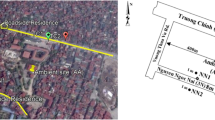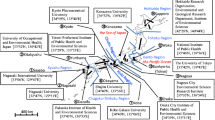Abstract
Airborne fine particulate matter across the United States is monitored by different networks, the three prevalent ones presently being the Clean Air Status and Trend Network (CASTNet), the Interagency Monitoring of PROtected Visual Environment Network (IMPROVE) and the Speciation and Trend Network (STN). If combined, these three networks provide speciated fine particulate data at several hundred locations throughout the United States. Yet, differences in sampling protocols and samples handling may not allow their joint use. With these concerns in mind, the objective of this study is to assess the spatial and temporal comparability of the sulfate, nitrate and ammonium concentrations reported by each of these networks. One of the major differences between networks is the sampling frequency they adopted. While CASTNet measures pollution levels on seven-day integrated samples, STN and IMPROVE data pertain to 24-hour samples collected every three days. STN and IMPROVE data therefore exhibit considerably more short-term variability than their CASTNet counterpart. We show that, despite their apparent incongruity, averaging the data with a window size of four to six weeks is sufficient to remove the effects of differences in sampling frequency and duration and allow meaningful comparison of the signals reported by the three networks of concern. After averaging, all the sulfate and, to a lesser degree, ammonium concentrations reported are fairly similar. Nitrate concentrations, on the other hand, are still divergent. We speculate that this divergence originates from the different types of filters used to collect particulate nitrate. Finally, using a rotated principal component technique (RPCA), we determined the number and the geographical organization of the significant temporal modes of variation (clusters) detected by each network for the three pollutants of interest. For sulfate and ammonium, the clusters’ geographical boundaries established for each network and the modes of variations within each cluster seem to correspond. RPCA erformed on nitrate concentrations revealed that, for the CASTNet and IMPROVE networks, the modes of variation do not correspond to unified geographical regions but are found more sporadically. For STN, the clustered areas are unified and easily delineable. We conclude that the possibility of jointly using the data collected by CASTNet, IMPROVE and STN has to be weighed pollutant by pollutant. While sulfate and ammonium data show some potential for joint use, at this point, combining the nitrate data from these monitoring networks may not be a judicious choice.
Similar content being viewed by others
Author information
Authors and Affiliations
Rights and permissions
About this article
Cite this article
Gego, E.L., Porter, P.S., Irwin, J.S. et al. Assessing the Comparability of Ammonium, Nitrate and Sulfate Concentrations Measured by Three Air Quality Monitoring Networks. Pure appl. geophys. 162, 1919–1939 (2005). https://doi.org/10.1007/s00024-005-2698-3
Received:
Accepted:
Issue Date:
DOI: https://doi.org/10.1007/s00024-005-2698-3




